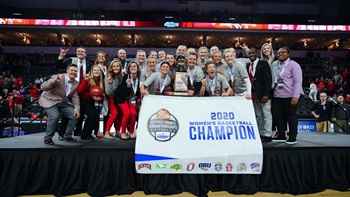Research on Quick Response Codes at USD offers solutions for critical identification issues
QR codes, similar to barcodes, are traditionally printed as blocks of black and white, and can be scanned by smartphones. They are becoming increasingly popular in marketing and can hold a hundred times more information than traditional barcodes. They are often used to direct consumers to product websites and special offers. Dr. Stanley May, professor of chemistry at USD, and Profs. Jon Kellar and William Cross at SDSM&T have found a way to incorporate tiny nanoparticles into inks to print the QR codes, making them visible only when viewed by infrared laser light. The process is known as ‘upconversion’ where the nanoparticles absorb photons in the invisible near-infrared part of the spectrum, and then emit visible light.
This new technology holds great potential in the fight against counterfeiting and forgery – estimated by the Organization for Economic Cooperation and Development to cost the world economy nearly $250 billion a year. Other possible uses include printing on materials to inhibit tampering and securing important documents such as passports and other identification and security cards.
“This technology can be customized as the needs continue to evolve,” said May. “We can manipulate the composition of the inks and the characteristics of the code ‘readers’ to adapt to a broad range of specific applications.”
The collaborative work by SDSM&T and USD researchers was recently published in the British academic journal Nanotechnology and quickly caught the attention of national and international media. Some of the many outlets where the research has appeared include: BBC News, NBCNews.com, Physics.org and Reuters Online.


